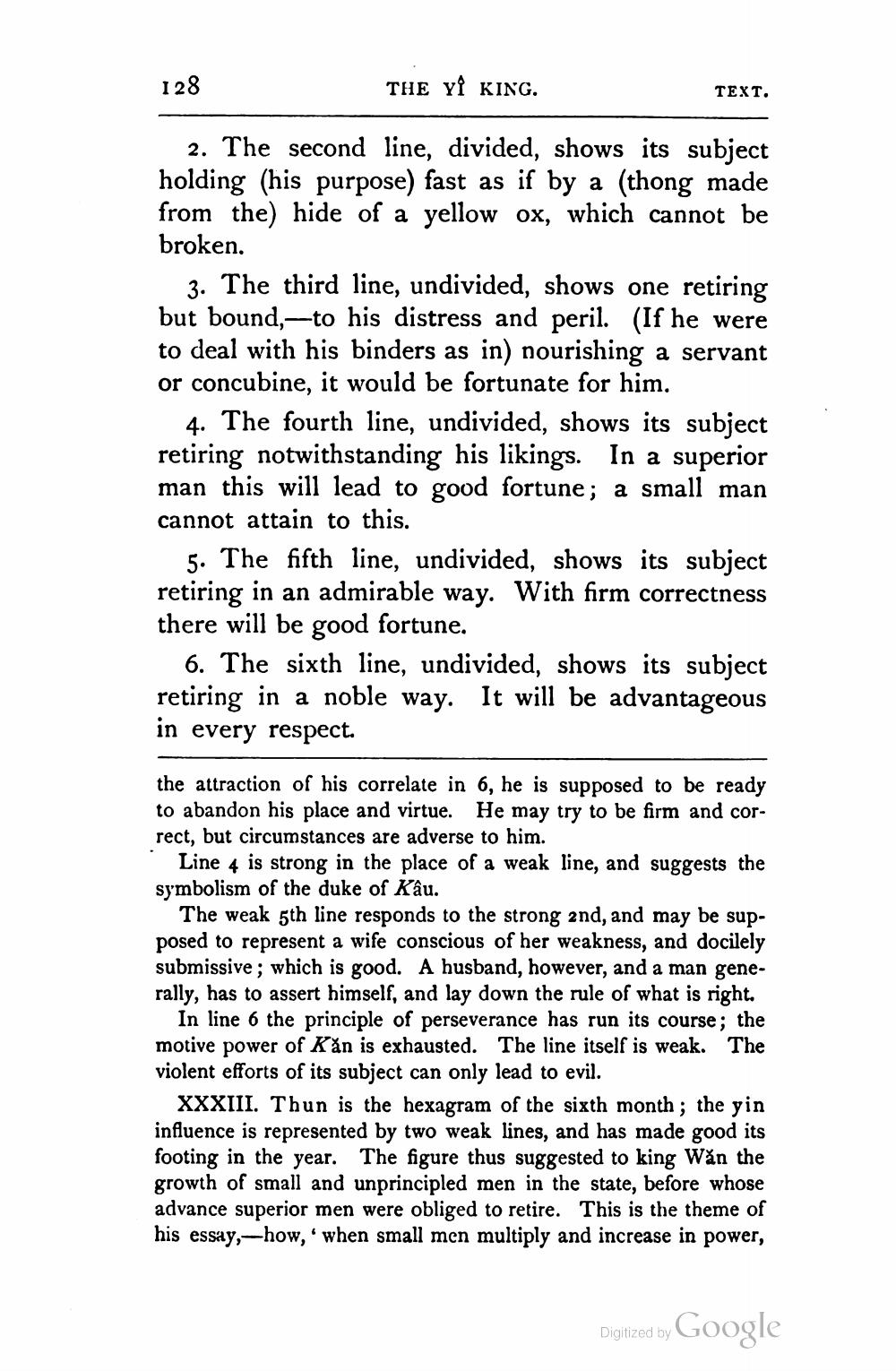________________
128
THE YÎ KING.
TEXT.
2. The second line, divided, shows its subject holding (his purpose) fast as if by a (thong made from the) hide of a yellow ox, which cannot be broken.
3. The third line, undivided, shows one retiring but bound, -to his distress and peril. (If he were to deal with his binders as in) nourishing a servant or concubine, it would be fortunate for him.
4. The fourth line, undivided, shows its subject retiring notwithstanding his likings. In a superior man this will lead to good fortune; a small man cannot attain to this.
5. The fifth line, undivided, shows its subject retiring in an admirable way. With firm correctness there will be good fortune.
6. The sixth line, undivided, shows its subject retiring in a noble way. It will be advantageous in every respect.
the attraction of his correlate in 6, he is supposed to be ready to abandon his place and virtue. He may try to be firm and correct, but circumstances are adverse to him.
Line 4 is strong in the place of a weak line, and suggests the symbolism of the duke of Kâu.
The weak 5th line responds to the strong and, and may be supposed to represent a wife conscious of her weakness, and docilely submissive; which is good. A husband, however, and a man generally, has to assert himself, and lay down the rule of what is right.
In line 6 the principle of perseverance has run its course; the motive power of Kån is exhausted. The line itself is weak. The violent efforts of its subject can only lead to evil.
XXXIII. Thun is the hexagram of the sixth month; the yin influence is represented by two weak lines, and has made good its footing in the year. The figure thus suggested to king Wăn the growth of small and unprincipled men in the state, before whose advance superior men were obliged to retire. This is the theme of his essay,-how,' when small men multiply and increase in power,
Digitized by Google




